History > QUESTIONS & ANSWERS > Ch. 25 AMSCO Reading Guide (2018 Edition) (APUSH): Diplomacy & WWII (1929-1945) APUSH Review Guide f (All)
Ch. 25 AMSCO Reading Guide (2018 Edition) (APUSH): Diplomacy & WWII (1929-1945) APUSH Review Guide for AMSCO chapter 25.
Document Content and Description Below
Name: Class Period: 2 Diplomacy & WWII (1929-1945) APUSH Review Guide for AMSCO chapter 25. Key Concepts FOR PERIOD 7: Key Concept 7.1: Growt... h expanded opportunity, while economic instability led to new efforts to reform U.S. society and its economic system. Key Concept 7.2: Innovations in communications and technology contributed to the growth of mass culture, while significant changes occurred in internal and international migration patterns. Key Concept 7.3: Participation in a series of global conflicts propelled the United States into a position of international power while renewing domestic debates over the nation’s proper role in the world. Section 1 Guided Reading, Diplomacy and World War II, 1929-1945, pp 521-540 From Hoover to FDR, pp 521-526 1. Evaluate the effectiveness of Franklin Roosevelt’s foreign policies from 1933-1938. Main Ideas Definitions/Explanations/Notes Analysis In the years following World War I, the United States pursued a unilateral foreign policy that used international investment, peace treaties, and select military intervention to promote a vision of international order, even while maintaining U.S. isolationism, which continued to the late 1930s. Chapter introduction… U.S foreign policy changed from neutrality to total involvement - Transformed American economy in many ways more dramatically than the New Deal Herbert Hoover’s Foreign Policy… Should not enter into firm commitments to preserve the security of other nations - Isolationism Japanese Aggression in Manchuria…Japan posed the greatest threat to World peace – defied Open Door policy and the League of Nations - Established a puppet government - League failed to take any real action Stimson Doctrine…would refuse to recognize the legitimacy of any regime like “Manchukuo” that had been established by force - Endorsed by the League of Nations Latin America…Ended interventionist policies by 1) having U.S. troops leave Nicaragua and 2) negotiating a treaty with Haiti to remove all U.S. troops Franklin Roosevelt’s Policies, 1933-1938 Economic policies over foreign policy Good-Neighbor Policy…interventionism no longer made sense economically because the U.S. lacked money to encourage foreign business. Also, needed Latin American cooperation in taking down forces like Germany and Italy Pan-American Conferences…Pledged to never intervene again Cuba…Resented the Platt Amendment, which mad their country subject to U.S. approval - Nullified by Roosevelt Mexico…tested patience and commitment by seizing American oil properties - Roosevelt encouraged American companies to make a settlement Economic Diplomacy…economy was Roosevelt’s top priority Recognition of the Soviet Union…Wanted to increase trade – declared them to be a recognized country Philippines…Tydings-McDuffie Act – independence of the Philippines and the gradual removal of U.S. troops Reciprocal Trade Agreements…Lower tariffs to increase international trade - Reduced U.S. tariffs by up to 50% Events Abroad: Fascism and Aggressive Militarism…National resentments after World War I, economic hardships – Japan, Italy, and Germany (Axis powers) Italy…attracted dissatisfied veterans, nationalists, and those afraid of rising communism - Fascism became dominant ideology in the 1930s European dictatorships Germany…Reaction to deplorable economic conditions and national resentments over the Treaty of Versailles - Unemployed German workers Japan…Economic conditions worsened, the emperor found the best way to access basic raw materials was to invade China and Southeast Asia American Isolationists…wanted to make sure that the United States would never be drawn into another foreign war – strongest in the Midwest and among Republicans The Lessons of World War I…U.S. participation in WWI was to serve the greed of bankers and arms manufacturers. Influenced isolationist legislation How did Hoover differ from Progressive Era foreign policy? Defend your answer with specific evidence. How did FDR differ from Progressive Era foreign policy? Defend your answer with specific evidence. Main Ideas Definitions/Explanations/Notes Analysis In the years following World War I, the United States pursued a unilateral foreign policy that used international investment, peace treaties, and select military intervention to promote a vision of international order, even while maintaining U.S. isolationism, which continued to the late 1930s. Neutrality Acts…To ensure the U.S policy of neutrality - Roosevelt was hesitant The Neutrality Act of 1935…authorized the POTUS to prohibit all arms shipments and to forbid U.S. citizens to travel on all ships of belligerent nations The Neutrality Act of 1936…forbade the extension of loans and credits to belligerents The Neutrality Act of 1937…forbade the shipment of arms to the opposing sides in the Civil War in Spain Spanish Civil War…ideological struggle between the forces of fascism and the forces of republicanism (Loyalists) America First Committee…mobilize public American opinion against war Prelude to War…Democracies were nervous, developed a point of appeasement Appeasement… 1. Ethiopia, 1935…Mussolini ordered troops into Ethiopia to prove his military might 2. Rhineland, 1936…openly defied Treaty of Versailles by militarizing the region 3. China, 1937…Japan & China at war, sink U.S. ship, U.S. accepts apology 4. Sudetenland, 1938…had a right to take over the land because most people were German-speaking. British and French, with U.S. approval, allowed Hitler to take the land unopposed - Appeasement became synonymous with Munich Quarantine Speech…democracies must act together to quarantine fascism and Nazism – seen as politically unwise, reaction was largely negative Preparedness…argued for neutrality and an arms build-up, simultaneously. Increased military and naval budgets - Only used to protect an invasion of the Western Hemisphere How did American Identity in the years leading up to WWII mimic identity leading up to WWI? Explain how each of the Neutrality Acts illustrate a lesson learned from WWI. 1935: 1936: 1937: Was the policy of appeasement compatible with Woodrow Wilson’s Fourteen Points? Explain your reasoning. From Neutrality to War, 1939-1941, pp 527-531 2. Explain why the United States to change its foreign policy from neutrality to interventionism. Main Ideas Definitions/Explanations/Notes Analysis The involvement of the United States in World War II, while opposed by most Americans prior to the attack on Pearl Harbor, vaulted the United States into global political and military prominence, and transformed both American society and the relationship between the United States and the rest of the world From Neutrality to War, 1939-1941…Broke Munich agreement, sent troops to occupy all of Czechoslovakia Outbreak of War in Europe…pledged to fight if Poland was attacked - Non-aggression pact between Soviet Union and Germany - Pledged to divide Poland between themselves Invasion of Poland…Britain and France declared war - Also, at war with Italy and Japan Blitzkrieg…lightning war Changing U.S. Policy…gradually gave aid to the Allies - Many were alarmed by Nazism - Winston Churchill and Roosevelt = key partnership “Cash and Carry”…arms embargo would help Britain because they had control of the seas - A belligerent could buy U.S. arms if they used their own ships and paid cash Selective Service Act (1940)…provided for the registration of all American men between 21 and 35 and for the training of 1.2 million troops in just one year - Peacetime draft different from Civil War and WWI Destroyers-for-Bases Deal…Britain received 50 older destroyers and gave the U.S> the right to build military bases on British islands The Election of 1940…would not turn down the Democratic nomination if it were offered - “You boys are not going to be sent into any foreign wars” Wendell Willkie…largely agreed with Roosevelt except for the New Deal - Strongest criticism was him breaking the two-term tradition Results…1) strong economic recovery enhanced by defense purchases and 2) fear of war, which made voters want a more experienced leader Explain why FDR’s foreign policy began to change from isolationism to interventionism as illustrated in his polices prior to the attack on Pearl Harbor. Why did Franklin Roosevelt decide to run for a third term? Was he the first to do so? Why was it so controversial? Main Ideas Definitions/Explanations/Notes Analysis The involvement of the United States in World War II, while opposed by most Americans prior to the attack on Pearl Harbor, vaulted the United States into global political and military prominence, and transformed both American society and the relationship between the United States and the rest of the world. Global conflicts over resources, territories, and ideologies renewed debates over the nation’s values and its role in the world, while simultaneously propelling the United States into a dominant international military, political, cultural, and economic position. Arsenal of Democracy…direct threat to U.S. security and to the future of democratic governments everywhere - Explained his thinking as to why they should go against neutrality Four Freedoms…lending money to Britain for the purchase of raw U.S. materials - Freedom of speech, religion, freedom from want and fear Lend-Lease Act…ending the cash and carry requirement of the Neutrality act and letting Britain obtain all the U.S. arms it needed Atlantic Charter…affirmed that the general principles for a sound peace after the war would include self-determination or all people, no territorial expansion, and free trade Shoot –on-Sight…ordered the U.S. Navy to escort British ships carrying lend-lease materials from U.S. shores as far as Iceland - Undeclared Naval war against Germany Disputes with Japan…Japanese invasion of China and ambitions to extend its conquests to SE Asia - Hitler’s success stopped them from continuing to invade further SE U.S. Economic Action…prohibited the export of steel and scrap iron to all countries except Britain and the nations of the Western Hemisphere. U.S. cut off from Japanese access to materials, like oil Negotiations…attempted to negotiate an oil deal between the two, unsuccessful - Quick action: Japan, slow action: U.S. Pearl Harbor…Japanese planes bombed every ship in sight Partial Surprise…High government officials knew that an attack was coming because they had broken the Japanese codes Declaration of War…declared a state of war between U.S. and Japan Soviet Union Invaded…Hitler broke the nonaggression pact and invaded - Churchill, Roosevelt, and Stalin allied together as the Allied Powers Compare Americans’ reaction to the bombing of Pearl Harbor to their reaction to the Zimmerman Note. Explain the significance of this comparison. [Show More]
Last updated: 1 year ago
Preview 1 out of 7 pages

Reviews( 0 )
Document information
Connected school, study & course
About the document
Uploaded On
Jan 14, 2021
Number of pages
7
Written in
Additional information
This document has been written for:
Uploaded
Jan 14, 2021
Downloads
0
Views
69





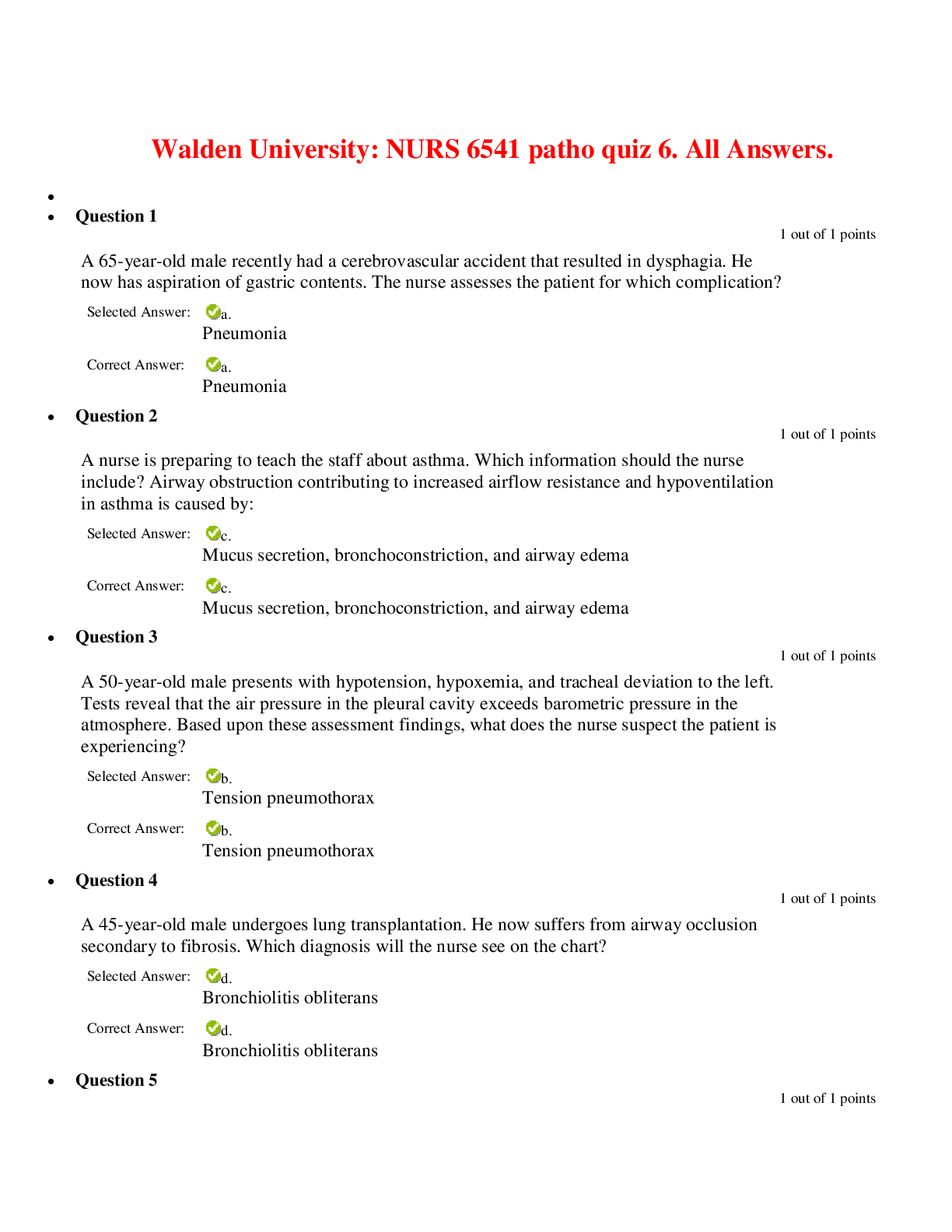





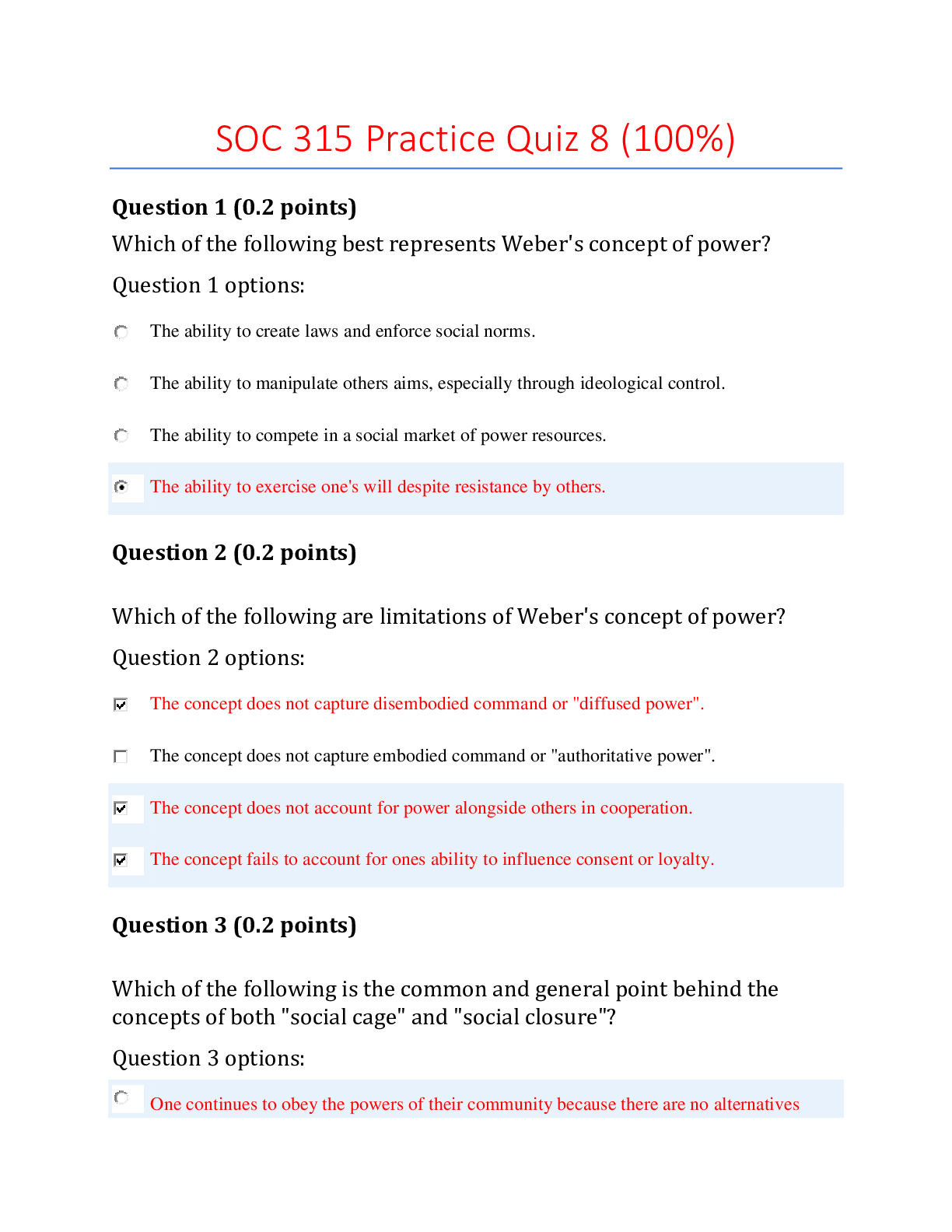
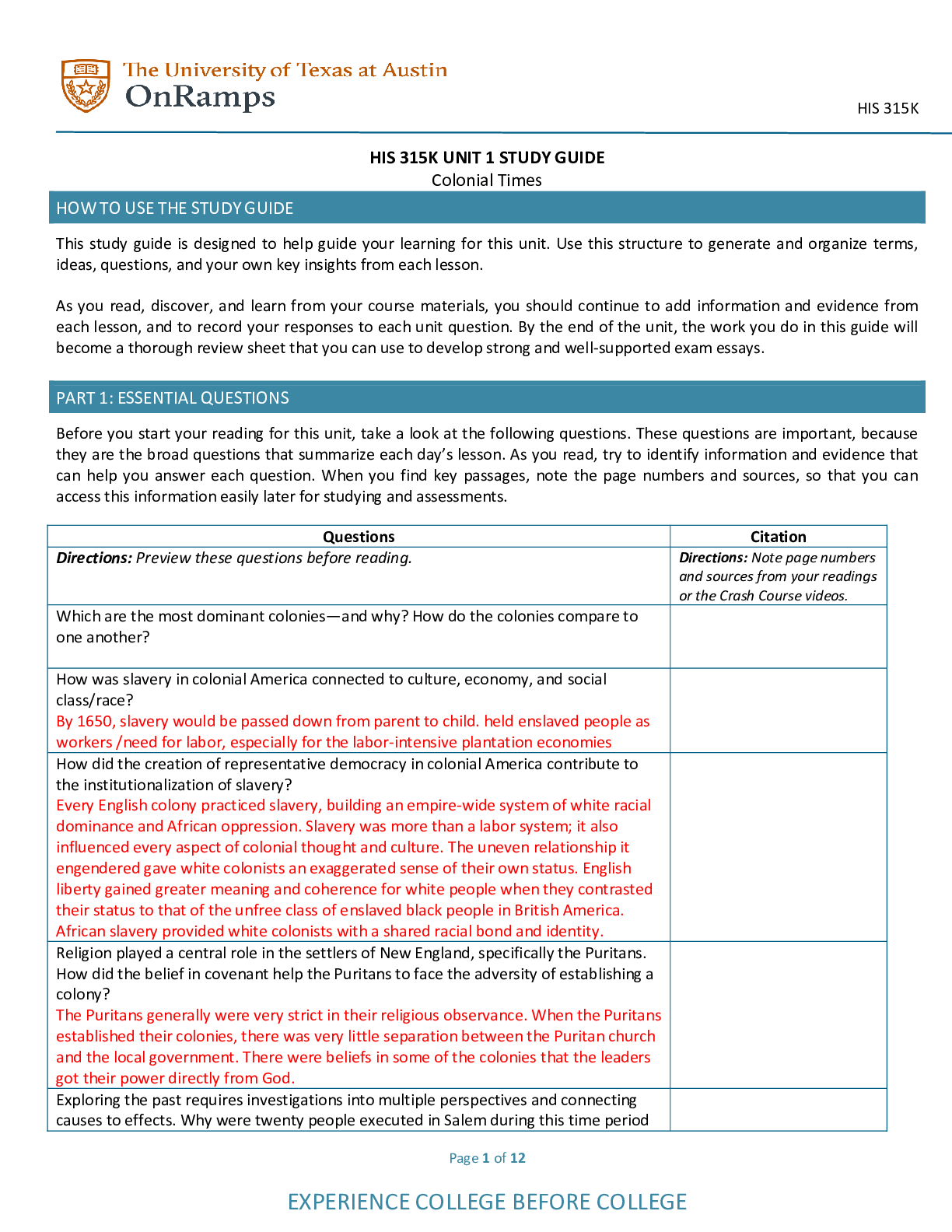
.png)

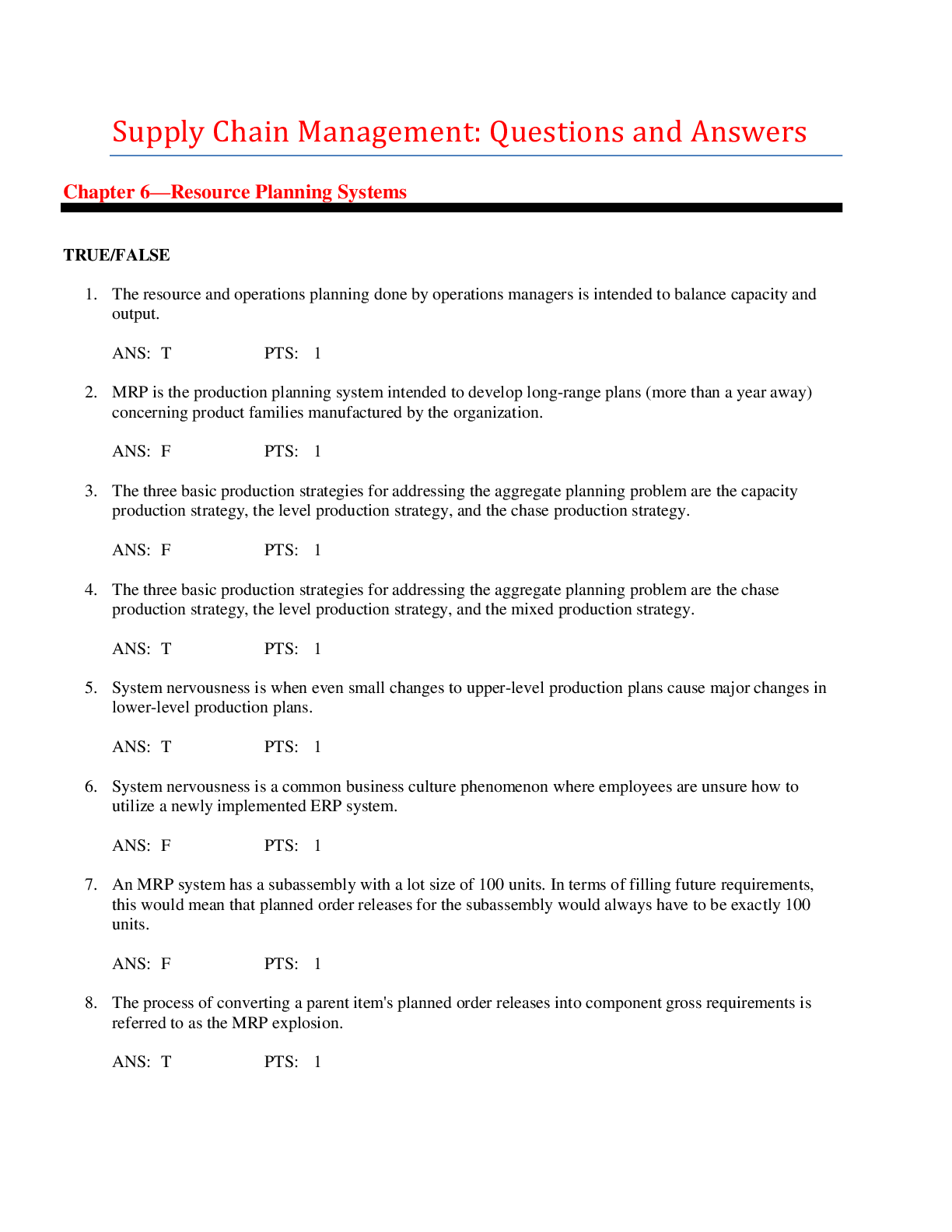
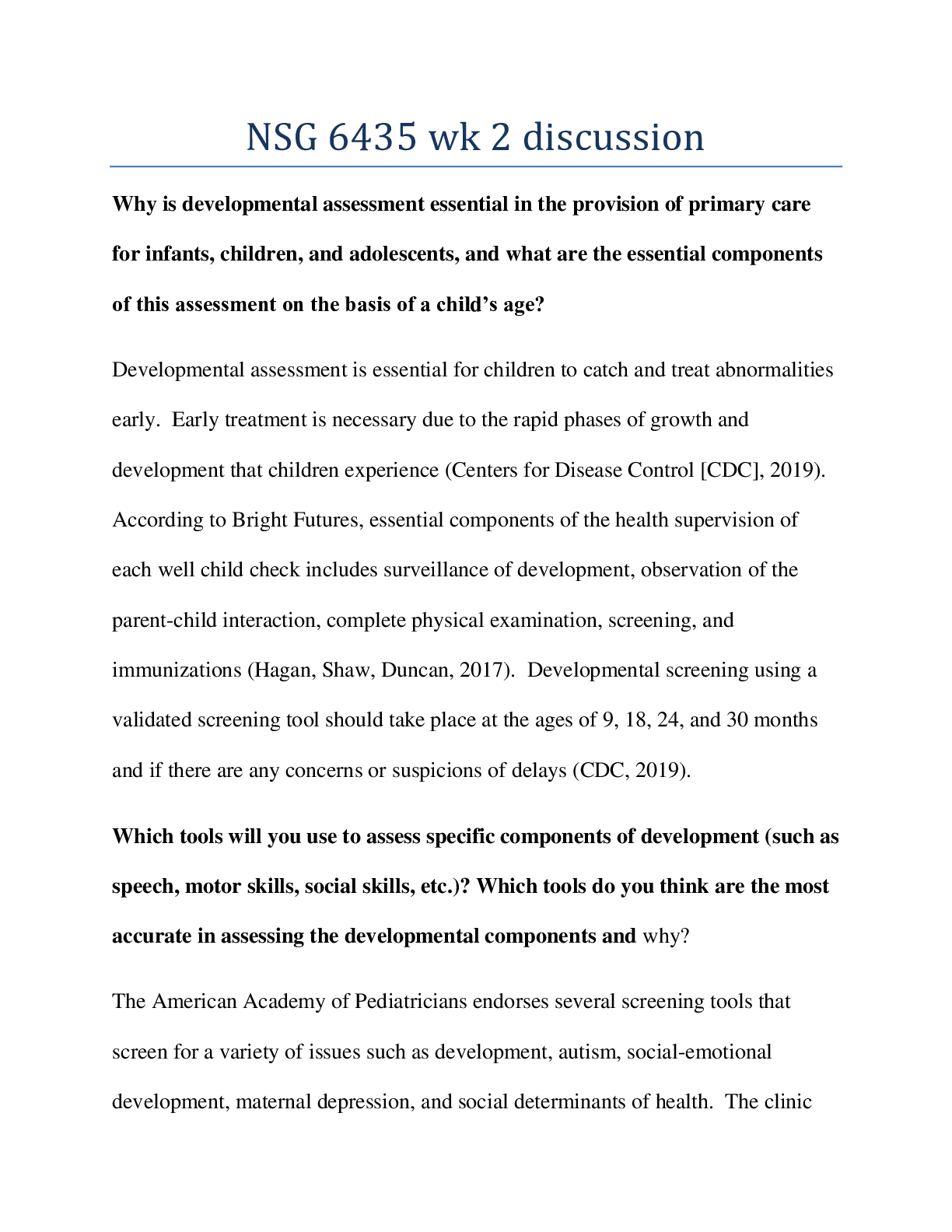


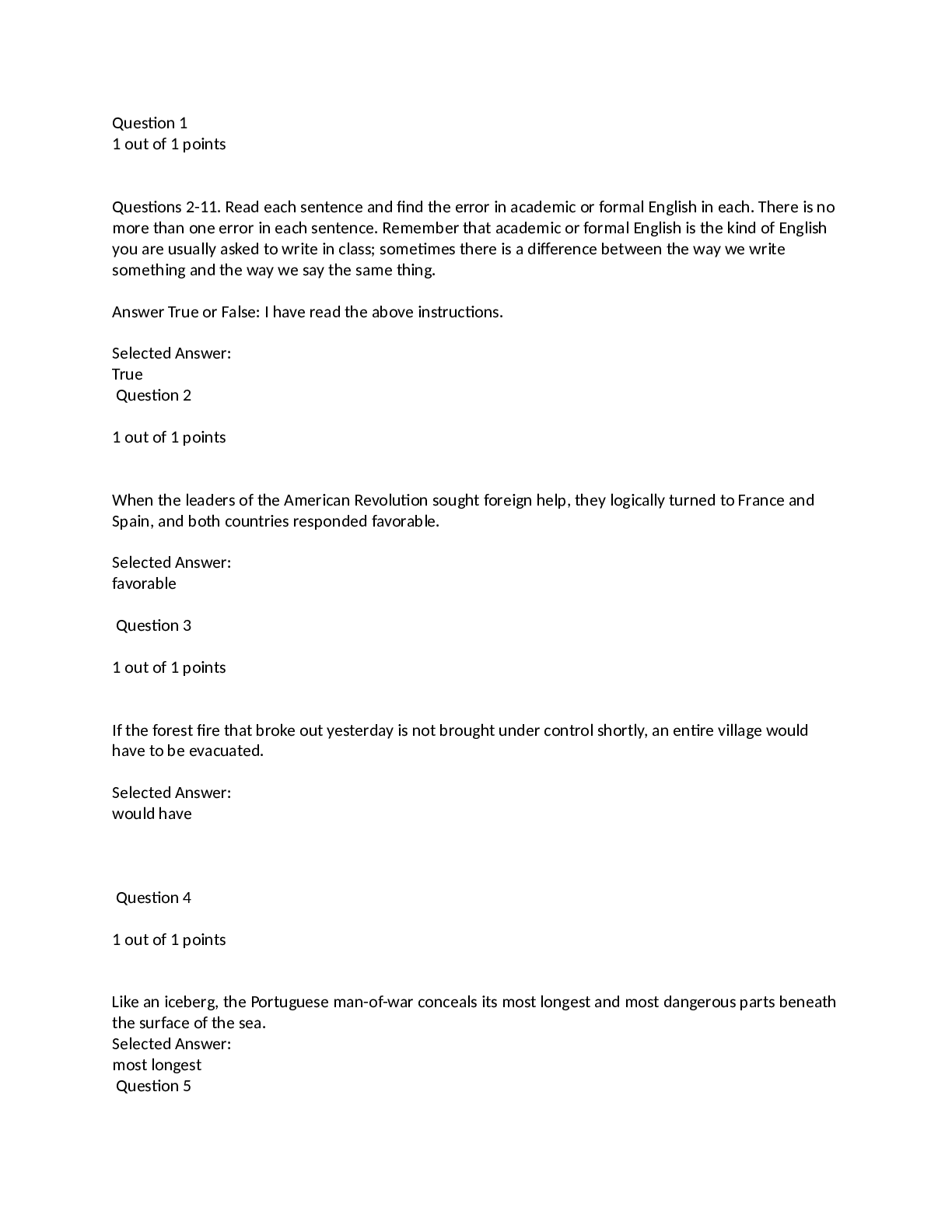
.png)
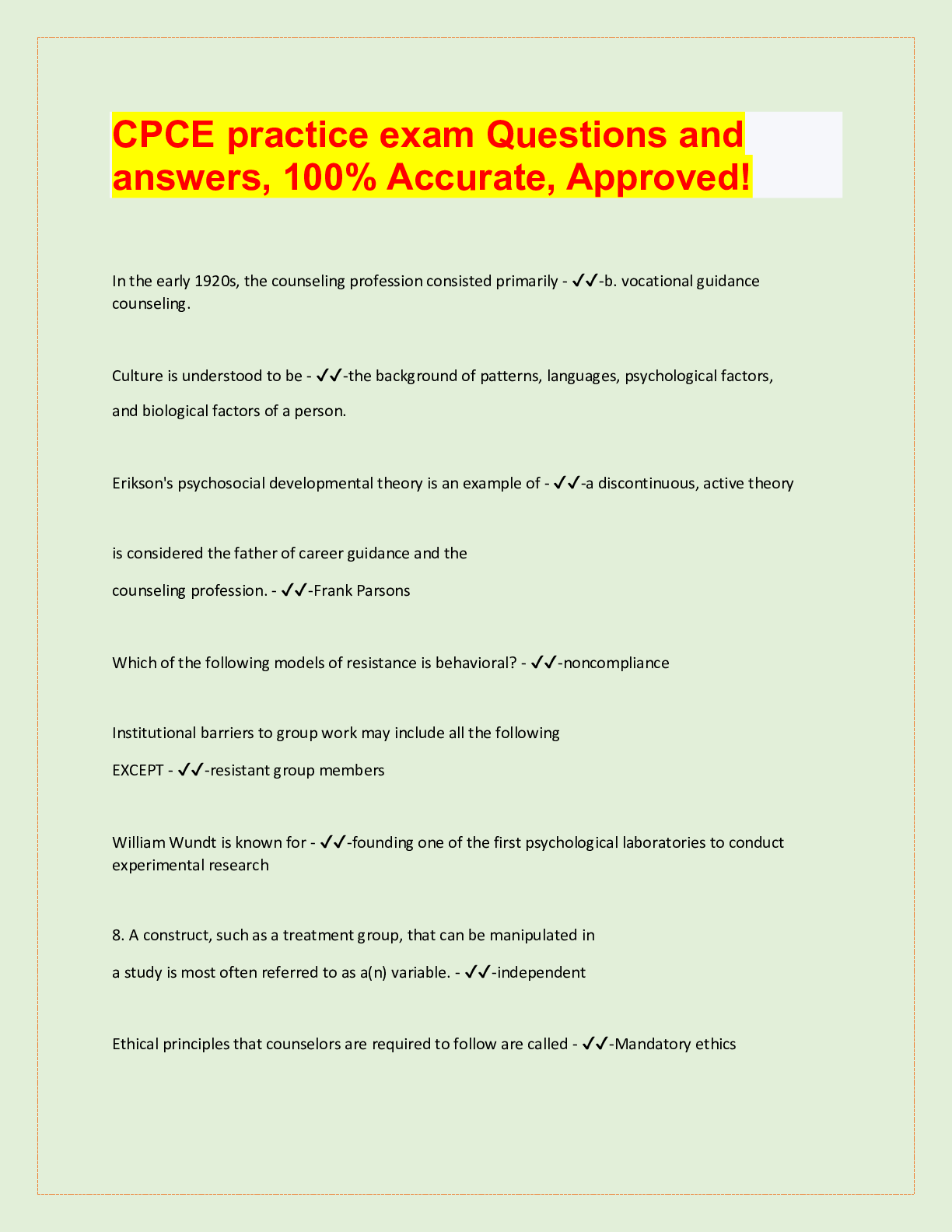
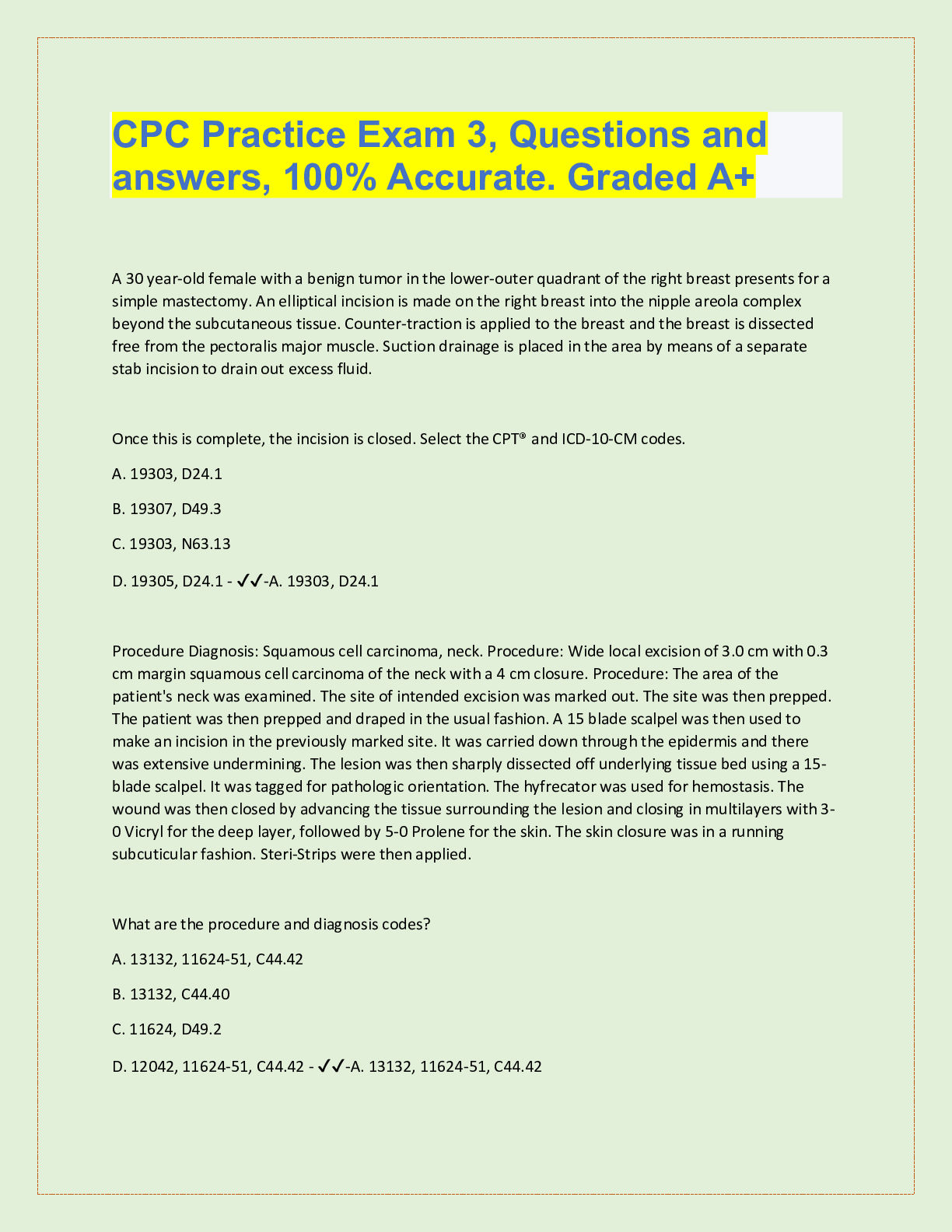
.png)


.png)


.png)

.png)
.png)
.png)

